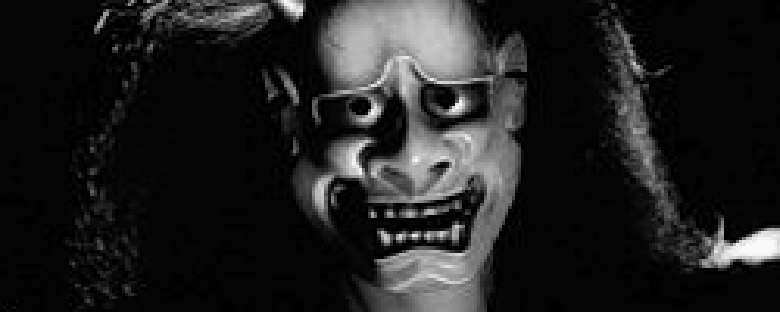Reviews
Devil Woman / The Ogress
Kaneto Shindô
Japan, 1964
Credits
Review by Marlin Tyree
Posted on 07 October 2006
Source The Criterion Collection DVD
Related articles
Features: 31 Days of Horror
“I’ve never seen anything really beautiful since the day I was born” is probably the only indispensable bit of dialogue in Kaneto Shindô’s 1964 horror classic Onibaba, made by the mother, one of three central characters in the film. She tells this to a samurai who has broken rank but professes to have divine facial beauty though it remains hidden behind an exquisitely crafted demon mask. The remark is especially telling because it is just this deep cynicism, selfishness and decidedly dark perspective on life that colors everything the mother observes and will eventually destroy the world around her.
The conditions under which she and her daughter-in-law (the son having been killed in the war) are forced to live are already bleak: It is medieval Japan during the warring-states period. Soldiers have trampled the land and farmers are reduced to scavenging and even killing for survival. Life for the mother and daughter is at its most primitive and becomes more brutal when a man, a close friend of the dead son, Hatchi, threatens the cohesiveness of the primitive household. The sexual attraction between the daughter-in-law and Hatchi is a direct threat not only the mother’s way of life but to the repressive forces of life that she comes to represent. Her obsession over the prospective threat, in fact, becomes a demonic force. The hellfire that will presumably consume the out-of-wedlock lovers, which is what the mother preaches to the daughter, is actually that force which blocks or forestalls the impetus to life, particularly the sexual impulse, and derives from the mother herself. The mother becomes the hellfire she warns the daughter against.
The basic Zen principle behind the story is, namely: the observer is that which is observed is admirably demonstrated, though some say, overworked, by Shindô in Onibaba. As in most cinematic treatments, Buddhist stories included, conveying the lesson is simple but the way in which it’s told is everything. And luckily, the film, moves beyond the confines of the koan (a Buddhist instructional story). Visually, the film is also a stunning exploration of the spiritual component of sexuality in which every aspect of the environment contributes to the young lovers’ eventual consummation. It makes the mother’s negative attitude toward the lovers seem like a cancerous destruction.
The film is shot in black and white amidst a lush marshland covered with shoulder length reeds. The only clearing in the brush that we’re privy to during the course of the film is reserved for either the river, narrow passageways, the huts of the characters or the infamous black hole, from which the film gets it’s title. Otherwise the waving reeds serve as a menacing sexual metaphor for the events that enfold, particularly during scenes of heightened sexual tension between the daughter-in-law and Hatchi. The reeds add a depth of field to a rather simple scenario and conceals as much as it reveals about the inner life while serving the outward machinations of the characters. Although it permeates the foreground, it is essentially neutral in character and becomes an extension of the characters and a fantastic visual tool for Shindô — an extended metaphor of sexuality representing the fundamental aspect of human life.
In fact, the look of the film is primarily its main attraction. Cinescope allowed cinematographer Kiyomi Kuroda to capture the lush environs surrounding and enveloping the characters within their small drama. Composer Hiraku Hayashi’s evocative score is intelligently placed, highlighting the more dramatic elements within the narrative and underscoring the more subtle, though silence seems to serve the film best in places and especially in its penultimate moment.
It’s apparent that Shindô’s story is an extended allegory (of sorts) of the tiny community and the world at large but it’s never overtly, or pointedly, political. He pushes the allegory furthest with his dialogue. For the most part it’s effectively spare but pushes credibility when, for instance, the mother moralizes. Particularly clumsy are passages where in the mother’s futile effort to scare the daughter-in-law out of her sexual attraction to Hachi, she dryly comments, “We’ve done nothing wrong. No demon can come after us. Might come after someone who’s bad, though.” These two women, who have been hardened by war and depravation, have long since passed the threshold of “good and bad,” yet the dialogue continually reflects a relationship of presumed naiveté. This heavy-handedness mars the film’s otherwise seamless visual beauty and slows down its narrative progression unnecessarily. Spare as the dialogue is, Shindô might have evoked far more with even less. It’s an unfortunate aspect of an otherwise compelling visual tale.
We don’t do comments anymore, but you may contact us here or find us on Twitter or Facebook.



